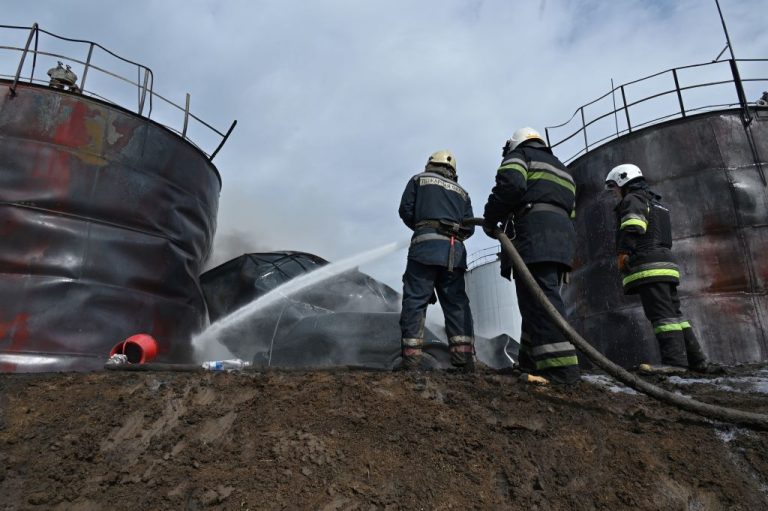News analysis
As U.S. oil prices below $100 per barrel for the first time in almost two months greeted commodities traders and market aficionados for the first full day of U.S. market trading in July, a sudden shift in the narrative promulgated by pundits and media outlets is particularly prominent.
While WTI Crude traded for as high as almost $124 per barrel less than a month ago, establishment chatter constantly highlighted various fundamental factors that supposedly would certainly underwrite three-digit oil prices as the new paradigm.
MORE ON MARKET SPECULATION HAZARDS
- Americans Burned Payday Loans and Credit Cards To Speculate On Digital Currency: Survey
- Ex-Lehman Bros Trader Charged in Alleged Multi-billion Dollar Viacom, Discovery Pump Scheme
- Reddit’s WallStreetBets and Gamestop Crowd Lost $5.27 Billion During a Bull Run: Study
- Bitcoin in the Jaws of Communist China
- Americans Lost More Money Gambling In Q1 2022 Than Ever Before
For example, just days ago in a June 3 article by CNN Business titled 3 Reasons High Oil Prices are Here to Stay, the outlet cited certain analysts who espoused causes such as global sanctions against Russian oil, a resurgence of demand in mainland China after the ruling Communist Party allegedly gave up the disastrous Zero COVID ghost, and OPEC+ production capacity limits.
WTI closed over $120 per barrel that day.
Hysterical speculation
Success
You are now signed up for our newsletter
Success
Check your email to complete sign up
And even as prices failed to eclipse the 13-year high of almost $130 set shortly after Russia began its military campaign against Ukraine in March, falling more than 20 percent to a low of under $102 in June, the hysterics nonetheless continued.
A July 1 article by BNN Bloomberg actually made the call that prices were headed for $380.
The eyebrow-raiser was based on analysis from an analyst at Wall Street behemoth JP Morgan, who posited that a “worst case” scenario where Vladimir Putin cuts national production by 5 million barrels per day would push the international market to $380.
But if Putin were benevolent enough to only cut production by 3 million barrels per day, the target was adjusted to a more palatable $190, they added.
The narrative has been nothing, if not consistent. In early March, just days after the Russia-Ukraine war began, Newsmax reported that the Chairman of the Houston Energy Club was excitedly forecasting a peak of $180 per barrel in comments given at the 6th Latin America Energy Forum.
But everything changed July 5 when WTI quickly fell from an opening price of roughly $110 to a low of $97.50.
Website OilPrice.com, which dubs itself the number one “source for oil & energy news,” for example, attributed the dump to “renewed recession fears and the prospect of demand destruction,” in one same day front page article.
In a second front page article published on the site earlier in the session, the outlet cited analysis from Citigroup calling a new low target of $65 by the end of 2022 and $45 by 2023, again because, “If the world enters a recession that would crash fuel demand.”
Halfway through the piece, the author revealed, “Citi’s analysts currently do not expect the U.S. economy to slide into a recession.”
The tone and meaning of the outlets messaging is at odds with other articles posted on its website just days earlier, such as July 1 pieces titled Supply Disruptions Drive Bullish Sentiment in Oil Markets, Saudis Unwilling To Upset Putin as Biden Begs for More Crude, and Total Global Recoverable Oil Reserves Are Falling At an Alarming Rate.
All of which may appear to speculators as expert analysis that market dynamics predicate that prices can only go up.
In fact, one of the authors of a piece above had claimed less than two months ago on May 19 in an article titled Oil Prices May Not Drop, Even If There Is A Recession that while a recession “will surely impact oil demand,” traders had nothing to worry about because, “It could just weaken its growth, not lead to an annual decline in global demand.”
$500 a barrel?
The habit of mixed messaging is far from a new development.
During the 2008 bubble when WTI Crude set its all time high of slightly more than $147 per barrel, CNN Money republished an article by Fortune Magazine titled Recent Drop in Crude Is an Illusion – Oil Is Going to $500.
The article was published Sept. 22, 2008, less than two months after the $147 bubble had popped.
Oil nonetheless finished strong that day at slightly over $109 per barrel, but notably closed just one month later at under $68 as it fell in a straight line for three more months to a low of barely more than $33.
The narrative the article relied on was surprisingly familiar, as it paraphrased Matthew Simmons, a man it described as an “investment banker with a penchant for research” as stating, “…from here on out, oil supplies can’t meet demand, and if we don’t act soon to solve this crisis, World War III could be looming.”
And while the article reads mostly as a thinly veiled advertorial for Simmon’s private investment bank, it also closed with the same tropes we see today, “Of course, if demand goes up but supply doesn’t, prices are apt to go through the roof.”
“And unlike global oil production, global oil demand doesn’t appear to be anywhere near a peak,” the author stated.
Simmons was one of the many promulgators of the “peak oil” hysteria narrative, including authoring a 2005 book, that claimed remaining reserves in the Middle East were on their way to nil, a factor that would have served as the harbinger of a global existential crisis for humanity.
The pundit died in August of 2010 at age 67 and was described in his Obituary as “a student of his pioneer Mormon heritage.”
A second Obituary revealed Simmons died in his hot tub on a Sunday night. A Monday autopsy declared the man “died from accidental drowning with heart disease as a contributing factor.”
WTI closed August of 2010 at slightly less than $72 per barrel.
Buffet gets long
And while the media is now encouraging speculators to sell oil when the price is low, just as they told the public to buy when the price is high, in lesser reported news, legendary investor Warren Buffet’s Berkshire Hathaway purchased an additional 9.9 million shares in Occidental Petroleum, according to a June 27 regulatory filing.
Website Seeking Alpha reported that Buffet’s investment firm paid close to $600 million for the bundle at an average price of $58.98, and now has a 17.4 percent stake in the company, holding almost 163.5 million shares, making Berkshire the company’s largest shareholder.
The outlet said, “In the first quarter, Berkshire purchased ~$7.0b worth of the Occidental [sic]. Buffett noted at the Berkshire annual meeting in early May that he was able to buy 14% of the petroleum refiner over only a two-week period.”
Reportedly, Buffet had no comments on the oil market, but was paraphrased as stating to attendees that he had “read a report on Occidental over a weekend and felt the CEO was simply running the company well.”
Occidental Petroleum posted a high of $74.04 in mid-May and has since retraced to a July 5 close of $59.11.
‘Too early’
In a dissent from the bearish narrative on crude, no less than Goldman Sachs stated that it’s “too early” for oil to drop on recession fears in a note to clients, according to an AFP wire release.
“While the odds of a recession are indeed rising, it is premature for the oil market to be succumbing to such concerns,” an analyst stated.
They added, “The global economy is still growing, with the rise in oil demand this year set to significantly outperform GDP growth.”















